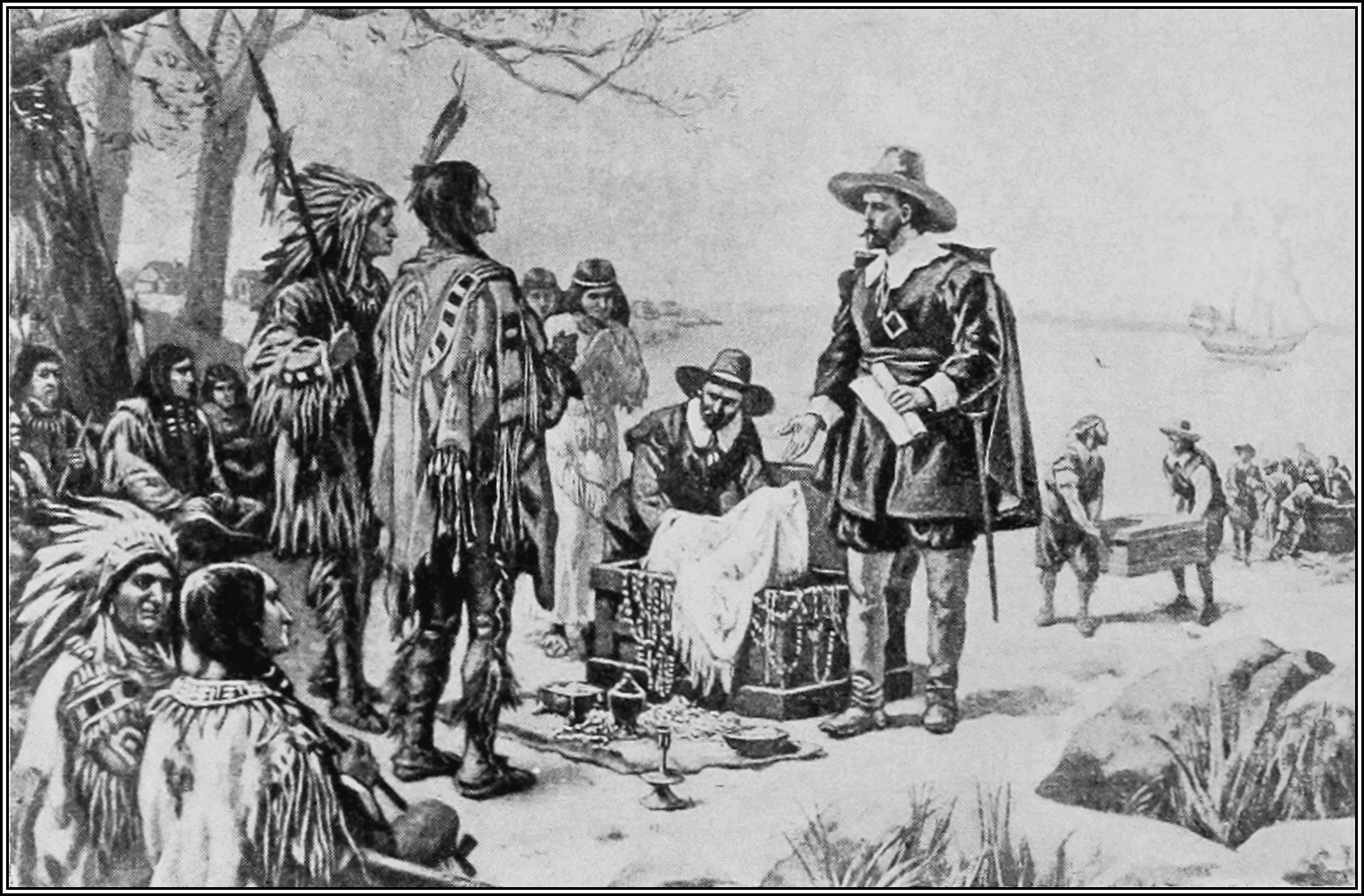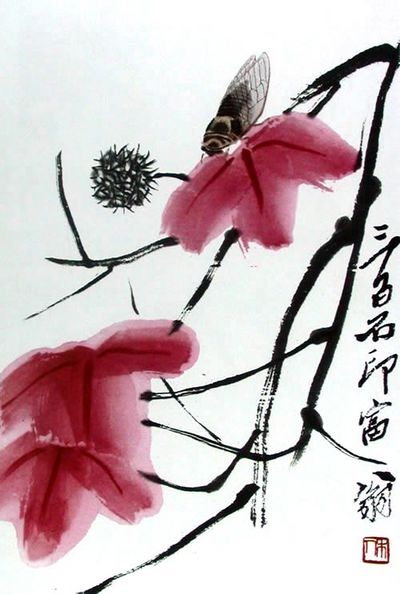|
Zhu Da
Zhu Da (), also known by his pen name Bada Shanren (), was a late-Ming and early-Qing dynasty Chinese painter, calligrapher, and poet. He was born in Nanchang, Jiangxi, in 1626, at during the Ming-Qing Transition. Zhu was mentally ill and displayed erratic behavior. He was related to the House of Zhu, which was destroyed and executed by the new Qing dynasty. Fearing that he would also be purged and executed, he fled to a Buddhist temple and learned the teachings of Chan (Zen) Buddhism, becoming a monk for 30 years. He spent most of his early to mid-life in the Buddhist monkhood, returning to Nanchang when he was about fifty years old. He embarked on an artistic career soon after reentering secular life in 1680, producing works that featured his calligraphy, painting, and poetry.Wang and Barnhart, 50. Most of the time, he painted simple subjects like flowers, plants, and animals and kept most of the given space empty. Toward the end of his life, he started painting more landsc ... [...More Info...] [...Related Items...] OR: [Wikipedia] [Google] [Baidu] |
Dong Qichang
Dong Qichang (; courtesy name Xuanzai (玄宰); 1555–1636) was a Chinese art theorist, Calligraphy, calligrapher, Painting, painter, and politician of the later period of the Ming dynasty. Life as a scholar and calligrapher Dong Qichang was a native of Huating, Shanghai, Hua Ting (located in modern-day Shanghai), the son of a teacher and somewhat precocious as a child. At 12, he passed the prefectural Civil service entrance examination and won a coveted spot at the prefectural Government school. He first took the imperial civil service exam at seventeen, but placed second to a cousin because his calligraphy was clumsy. This led him to train until he became a noted calligrapher. Once this occurred, he rose up the ranks of the imperial service passing the highest level at the age of 35. He rose to an official position with the Ministry of Rites. Qichang's calligraphy drew inspiration from prominent calligraphers Wen Zhengming and Zhao Mengfu and of the masters of the Jin dynasty ... [...More Info...] [...Related Items...] OR: [Wikipedia] [Google] [Baidu] |
17th-century Chinese Calligraphers
The 17th century lasted from January 1, 1601 (represented by the Roman numerals MDCI), to December 31, 1700 (MDCC). It falls into the early modern period of Europe and in that continent (whose impact on the world was increasing) was characterized by the Baroque cultural movement, the latter part of the Spanish Golden Age, the Dutch Golden Age, the French '' Grand Siècle'' dominated by Louis XIV, the Scientific Revolution, the world's first public company and megacorporation known as the Dutch East India Company, and according to some historians, the General Crisis. From the mid-17th century, European politics were increasingly dominated by the Kingdom of France of Louis XIV, where royal power was solidified domestically in the civil war of the Fronde. The semi-feudal territorial French nobility was weakened and subjugated to the power of an absolute monarchy through the reinvention of the Palace of Versailles from a hunting lodge to a gilded prison, in which a greatly expa ... [...More Info...] [...Related Items...] OR: [Wikipedia] [Google] [Baidu] |
1705 Deaths
In the Swedish calendar it was a common year starting on Sunday, one day ahead of the Julian and ten days behind the Gregorian calendar. Events January–March * January 8 – George Frideric Handel's first opera, '' Almira'', is premiered in Hamburg. * January 31 – The ''Hester'', a British 28-gun sailing ship with a crew of 70, is lost in Persia. * February 7 – Twelfth siege of Gibraltar: Marshal René de Froulay de Tessé of the French Army supplements the Spanish forces of the Marquis of Villadarias and seizes control of a strategic fortress, the Round Tower, but the forces retreat after a counterattack kills 200 of their number in the retaking of the Tower. * February 25 – George Frideric Handel's opera ''Nero'' premieres in Hamburg. * February 26 – Twelfth siege of Gibraltar: A French Navy fleet of 18 warships, commanded by Admiral Desjean, the Baron de Pointis arrives in the Bay of Gibraltar to aid the French and Spanish attempt t ... [...More Info...] [...Related Items...] OR: [Wikipedia] [Google] [Baidu] |
1626 Births
Events January–March * January 7 – Polish–Swedish War (1625–1629), Polish-Swedish War: Battle of Wallhof in Latvia – Gustavus Adolphus, King of Sweden, defeats a Polish army. * January 9 – Peter Minuit sails from Texel Island for America's New Netherland colony, with two ships of Dutch emigrants. * February 2 – King Charles I of England is crowned, but without his wife, Henrietta Maria, who declines to participate in a non-Catholic ceremony. * February 5 – The Huguenot rebels and the French government sign the Treaty of Paris (1626), Treaty of Paris, ending the second Huguenot rebellion. * February 10 – Battle of Ningyuan: In Xingcheng in China, after an 8-day battle, Ming dynasty commander Yuan Chonghuan defeats the much larger force of Manchu people, Manchu leader Nurhaci, who dies soon after and is succeeded by Huang Taiji. * February 11 – Emperor Susenyos of Ethiopia and Patriarch Afonso Mendes declare the primacy ... [...More Info...] [...Related Items...] OR: [Wikipedia] [Google] [Baidu] |
Sen-oku Hakuko Kan
is located in Kyoto, Japan and houses a large collection of Chinese bronze vessels, Chinese and Japanese mirrors, and a few Chinese bronze Buddhist figures. History and collections Sen-oku Hakuko Kan Museum was established in July 1960. "Sen-oku" is the Yagō of the Sumitomo family in Edo period, and the word of "Hakuko" was taken from the famous antique book ''"Sen-na Hakuko Zuroku" (宣和博古図録)"'' edited in the Northern Song dynasty under Emperor Huizong of Song. The collection was brought together by Sumitomo Kichizaemon VII before his death in 1926. It is credited with being one of the greatest collections of Asian bronzes in the world in quality and variety. The number of collections is more than 500 pieces. The museum houses more than 3,500 cultural objects, two of which have been designated by the Japanese government as National Treasures, 19 as Important Cultural Properties, and 60 as Important Art Objects ( ja). [...More Info...] [...Related Items...] OR: [Wikipedia] [Google] [Baidu] |
Zhang Daqian
Chang Dai-chien or Zhang Daqian (; 10 May 1899 – 2 April 1983) was one of the best-known and most prodigious Chinese artists of the twentieth century. Originally known as a '' guohua'' (traditionalist) painter, by the 1960s he was also renowned as a modern impressionist and expressionist painter. In addition, he is regarded as one of the most gifted master forgers of the twentieth century. Background Chang was born in 1899 in Sichuan Province to a financially struggling but artistic family, whose members had converted to Roman Catholicism. His first commission came at age 12, when a traveling fortune-teller requested he paint her a new set of divining cards. At age 17 he was captured by bandits while returning home from boarding school in Chongqing. When the bandit chief ordered him to write a letter home demanding a ransom, he was so impressed by the boy's brushmanship that he made the boy his personal secretary. During the more than three months that he was held captive, he ... [...More Info...] [...Related Items...] OR: [Wikipedia] [Google] [Baidu] |
Qi Baishi
Qi Baishi (1 January 1864 – 16 September 1957) was a Chinese painting, Chinese painter, noted for the whimsical, often playful style of his works. Born to a peasant family from Xiangtan, Hunan, Qi taught himself to paint, sparked by the Manual of the Mustard Seed Garden. After he turned 40, he traveled, visiting various scenic spots in China. After 1917 he settled in Beijing. Qi was the master of Hu Jieqing, the wife of Lao She. The subjects of his paintings include almost everything, commonly animals, scenery, figures, toys, vegetables, and so on. He theorized that "paintings must be something between likeness and unlikeness, much like today's vulgarians, but not like to cheat popular people". In his later years, many of his works depict mice, shrimp or birds. He was also good at seal carving and called himself "the rich man of three hundred stone seals" (). In 1953, he was elected president of the China Artists Association (). He died in Beijing in 1957. Early life He wa ... [...More Info...] [...Related Items...] OR: [Wikipedia] [Google] [Baidu] |
Zhao Mengfu
Zhao Mengfu (; courtesy name Zi'ang (子昂); pseudonyms Songxue (松雪, "Pine Snow"), Oubo (鷗波, "Gull Waves"), and Shuijing-gong Dao-ren (水精宮道人, "Master of the Water Spirits Palace"); 1254–1322), was a Chinese calligrapher, painter, and scholar during the Yuan dynasty. He was a descendant of the Song dynasty's imperial family through Emperor Xiaozong's brother Zhao Bogui who married a lady surnamed Song who was the granddaughter of Emperor Huizong. Zhao Bogui was a descendant of Emperor Taizu, through his son Zhao Defang. He was recommended by the Censor-in-chief to pay an audience with Kublai Khan in 1286 at the Yuan capital of Dadu, but was not awarded an important position in office. His work was however, greatly appreciated later by the Confucian-inspired Yuan Emperor Renzong. Zhao was a member of the "Academy of Worthies". He was married to Guan Daosheng, who was also an accomplished poet, painter and calligrapher. His rejection of the refined, ... [...More Info...] [...Related Items...] OR: [Wikipedia] [Google] [Baidu] |
Xu Wei
Xu Wei (, 1521–1593), also known as Qingteng Shanren (), was a Chinese painter, playwright, poet, and tea master during the Ming dynasty. Cihai: Page 802.Barnhart: Page 232. Life Xu's courtesy names were Wenqing (文清) and then later Wenchang (文長). His pseudonyms were "The Mountain-man of the Heavenly Pond" (天池山人 Tiānchí Shānrén), "Daoist of the Green Vine House" (青藤道士 Qīngténg Dàoshì) and "The Water and Moon of the Bureau's Farm" (署田水月 Shǔtián Shuǐ Yuè). Born in Shanyin (modern Shaoxing, Zhejiang), Xu was raised by a single mother who died when he was 14. At 21, he married a woman who died five years later. Though he passed the county civil examination at age 20, Xu was never able to pass the provincial civil service examinations, even after attempting it eight times.Barnhart: Page 230. Nevertheless, Xu was employed by Hu Zongxian, Supreme Commander of the Jiangsu-Zhejiang-Fujian coastal defense against the ''wokou'' pirates. Af ... [...More Info...] [...Related Items...] OR: [Wikipedia] [Google] [Baidu] |
Shen Zhou
Shen Zhou (, 1427–1509), courtesy names Qinan () and Shitian (), was a Chinese painting, Chinese painter in the Ming dynasty. He lived during the post-transition period of the Yuan conquest of the Ming. His family worked closely with the government and maintained its wealthy status. Shen later retired and lived a reclusive life, spending most of his time painting and taking care of his widowed mother. He was a contributor to the more individualist Wu School of Chinese art. Besides painting, he was also accomplished in history and the classics. Life Shen Zhou was born into a wealthy family in Xiangcheng District, Suzhou, Xiangcheng, near the thriving city of Suzhou, in the Jiangsu province, China. His genealogy traces his family's wealth to the late Yuan period, but only as far as Shen's paternal great-grandfather, Shen Liang-ch’en, who became a wealthy landowner following the dissolution of Mongol rule. After the collapse of the Yuan dynasty, Yuan and the emergence of the ... [...More Info...] [...Related Items...] OR: [Wikipedia] [Google] [Baidu] |




